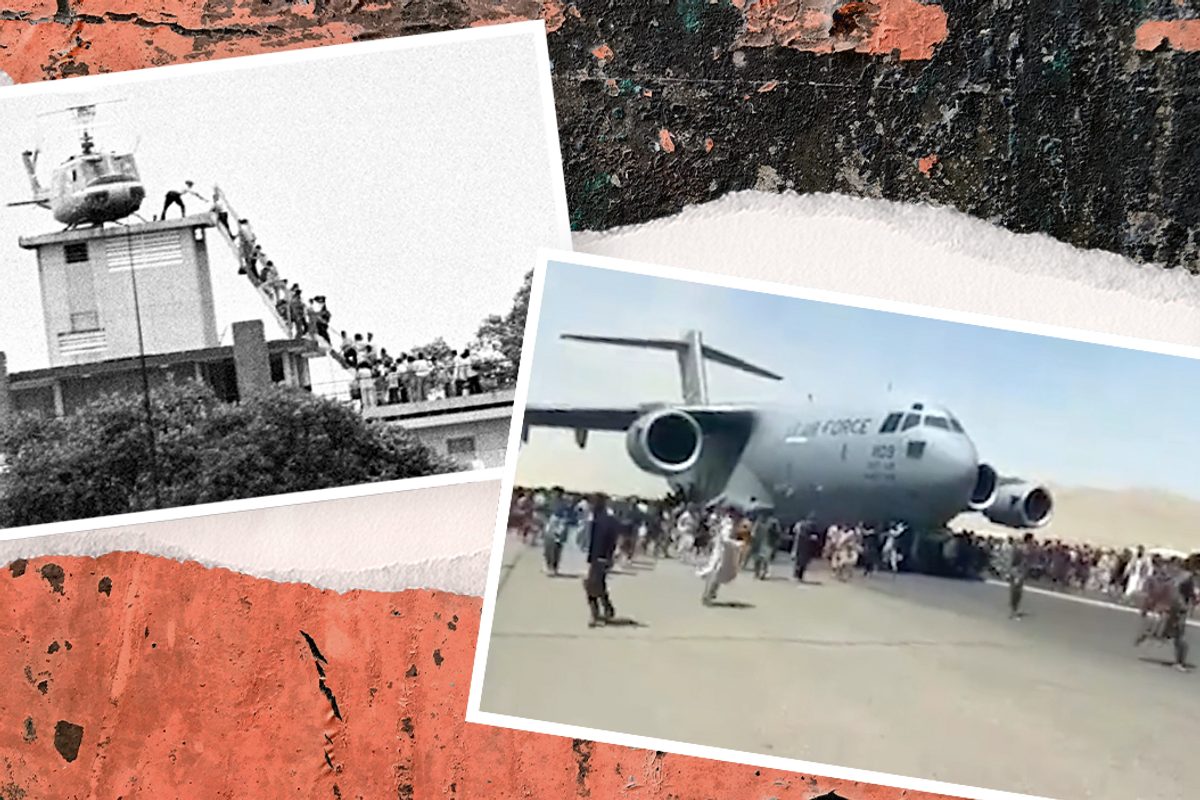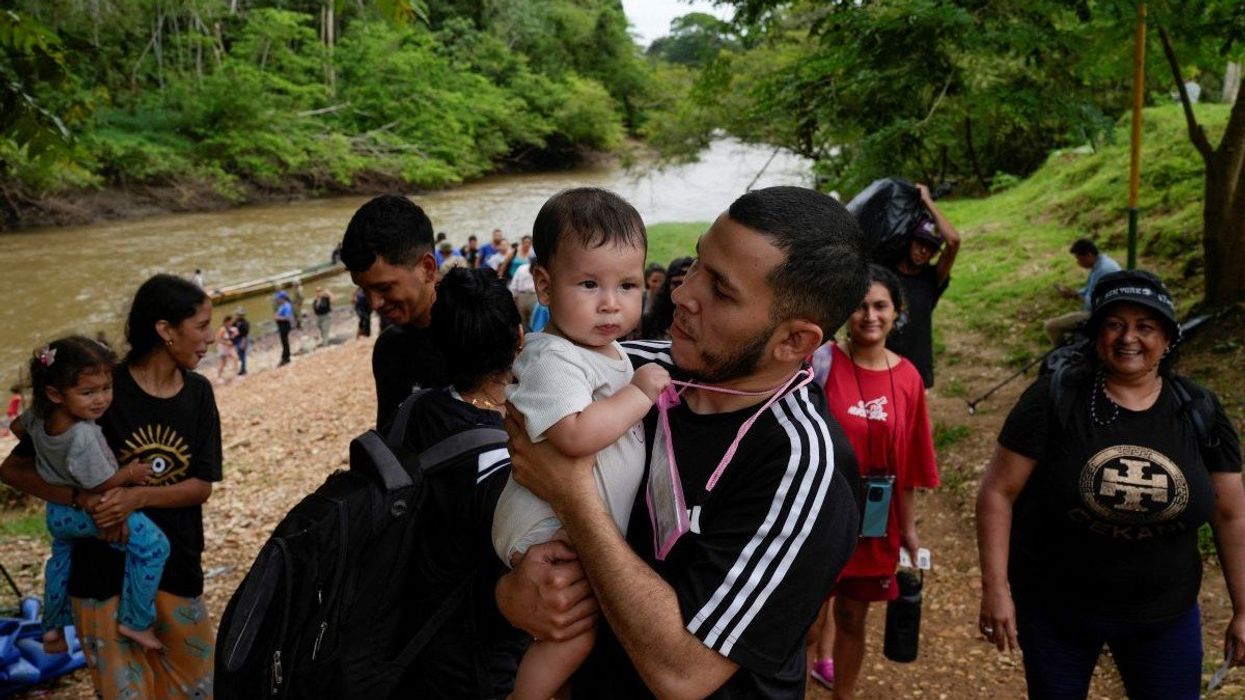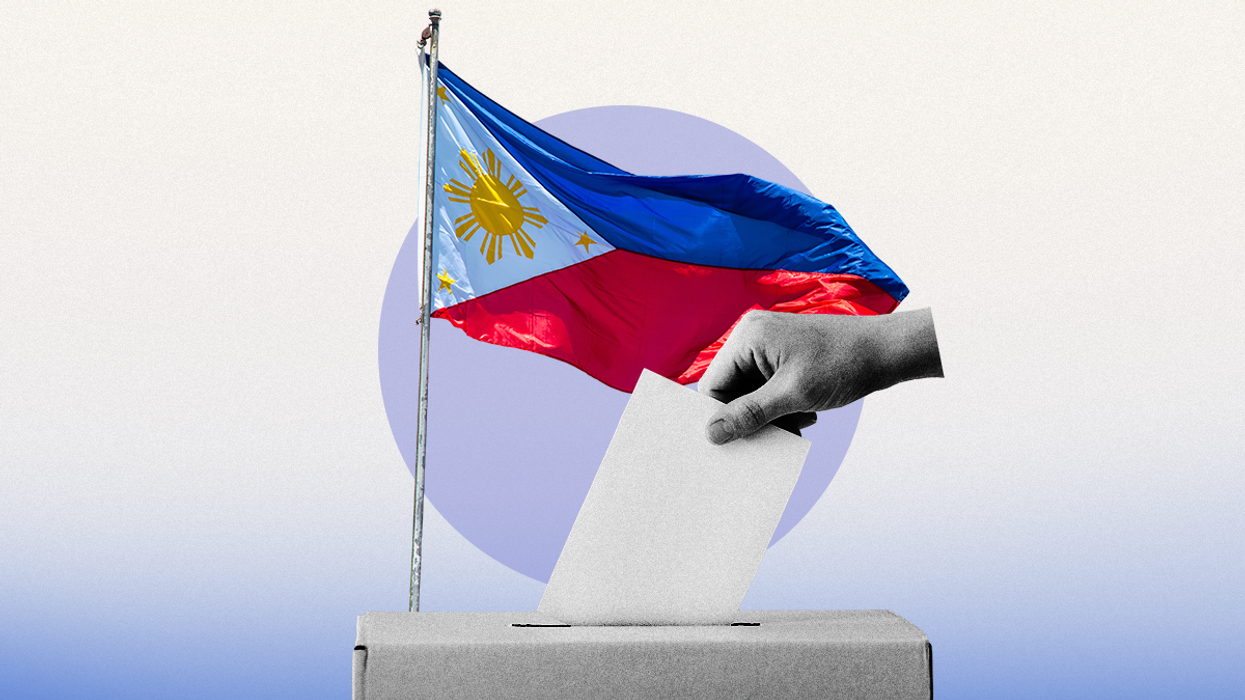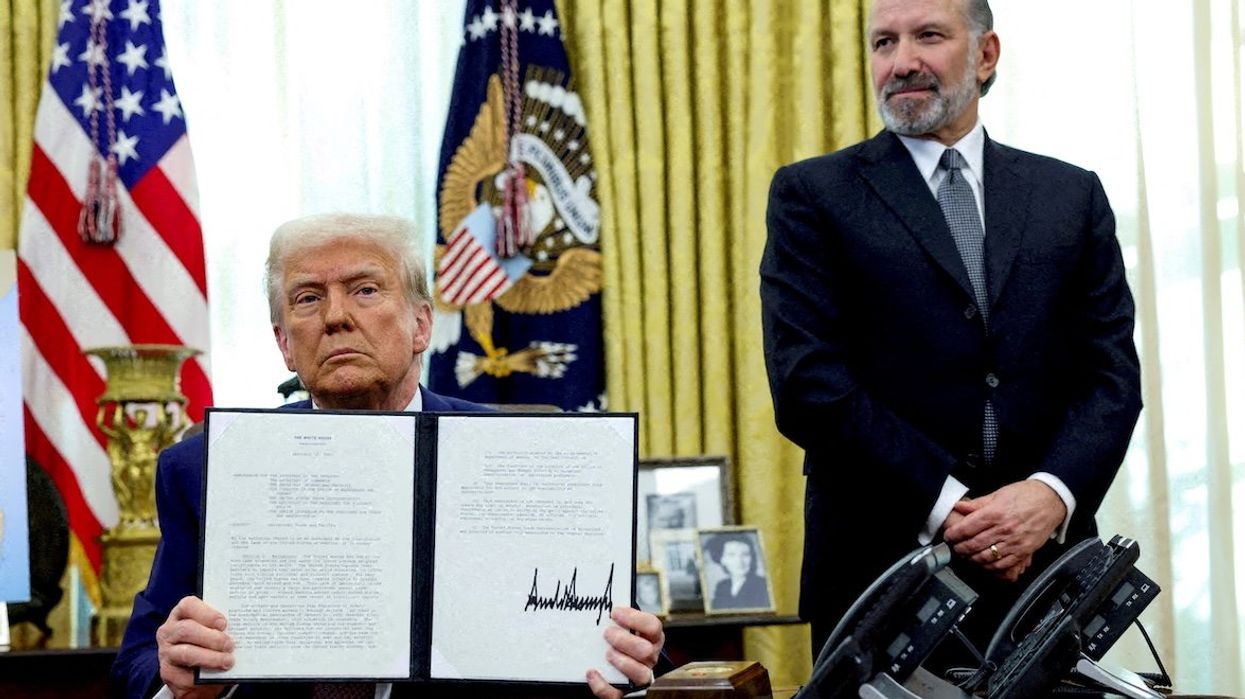When Kabul fell in August — as Taliban fighters swarmed Kabul and Afghan civilians tried to escape by clinging to the last departing planes — many Americans recalled a similar scene from half a century earlier: the 1975 Fall of Saigon, which marked the Vietnam War's end.
The coincidence is more than just a matter of spectacle. In clear, disturbing ways, the United States's failed campaign in Afghanistan mirrors the Vietnam effort some 50 years ago.
We repeated many of the mistakes we made in Vietnam because in all that time, we'd only selectively learned the war's lessons. When, for instance, veteran diplomat Richard Holbrooke brought up Vietnam in the Obama administration's early days — warning in 2009 that carrying out a troop "surge" in Afghanistan reminded him of President Lyndon Johnson's fateful 1965 decision to increase the number of American troops in Vietnam from 23,000 to 184,000 — nobody, certainly not Obama, wanted to hear it.
An unwillingness to grapple with Vietnam snaked its way down the chain of command, as George Packer reported in Our Man, his biography of Holbrooke. Secretary of State Hillary Clinton told Holbrooke: "They don't think they have anything to learn from Vietnam." Holbrooke erupted: "They're going to make the same mistakes!" Which, of course, they did, just like those before and after them, Republicans and Democrats alike.
The root of this unwillingness to learn is a certain kind of American hubris: American foreign policymakers have long assumed that because the United States holds unrivaled economic and military power, we can achieve whatever we like. But it was this attitude that allowed the many parallels between Afghanistan and Vietnam — not to mention the war's forgotten sideshows, Laos and Cambodia, where I lived in 2018 and 2019 — to go unnoticed or ignored.
Just as in Vietnam, the United States misunderstood the insurgents' motivations and the populations' sympathies, overestimated our own power, and imposed US security structures on places where they would never work. Ultimately, it was hubris that baked into US policy a "self-intoxicating confidence in our capacity to manipulate other societies." Those words are Stanley Hoffmann's, written in 1979 about US policy in Cambodia, but they ring just as true in 2021.
The Americans misunderstood Southeast Asia from the outset. Washington was blind to the power of Asian nationalism, thinking that since "'all Asians look alike,' all Asian nations will act alike," as James C. Thomson, a National Security Council staffer who resigned in protest of the war, wrote in 1968.
In short, the United States wrongly considered Vietnam a passive domino at risk of falling to Soviet or Chinese communism: Washington thought the war was some grand ideological struggle, when for the Vietnamese it was simply about self-determination. The Vietnamese communists were, first and foremost, nationalists opposed to yet another foreign occupation. Hanoi accepted Moscow and Beijing's support, but the North Vietnamese were not marching like automatons to the beat of a Soviet or Chinese drum.
Yet American officials argued otherwise for years. In 1968, Secretary of State Dean Rusk was still claiming that the Vietnamese "took their orders from Moscow."
This misconception led to a grand strategic error: thinking that bombing North Vietnam would bring Hanoi, under pressure from the Soviets and Chinese, to accept South Vietnam's existence. Henry Kissinger explained this thinking in Foreign Affairs in 1969: "We are so powerful that Hanoi is simply unable to defeat us militarily," and will eventually be forced to compromise. Kissinger accordingly told his staff to find Hanoi's "breaking point."
The problem was that Hanoi didn't have one. Hanoi did not take orders from Moscow or Beijing, and was not going to accept a deal that gave them anything less than all of Vietnam. Washington nonetheless doubled down, thinking that "American airpower could again force Asian communists into a compromise peace."
The US waged similarly brutal, fruitless air wars in Cambodia and Laos. President Richard Nixon wanted American bombs dropped on "anything that flies or anything that moves" in Cambodia, according to Kissinger. The US thus rained down more explosives on Cambodia and Laos, countries whose populations were then smaller than New York City's, than the Allies dropped in the entirety of World War II. Washington believed that doing so would weaken the Khmer Rouge, the Lao communists (the Pathet Lao), and the Viet Cong operating in those two countries.
Instead, the bombs killed hundreds of thousands of Cambodians (despite Kissinger's later claims that there were "fewer civilian casualties in Cambodia than there have been from American drone attacks") and 50,000 Lao.
In this way, the air war actually aided the communists by driving civilians into the insurgents' waiting arms. The journalist Richard Dudman confirms this, reporting after a period in Khmer Rouge captivity in the Cambodian jungle that "the bombing and the shooting was radicalizing the people of rural Cambodia and was turning the country into a massive, dedicated, and effective rural base."
Several years ago, I heard as much from Thon Bun, the 64-year-old chief of Cambodia's Kampout Tuk village, which sits alongside the country's Vietnamese border. "The chicken, the cow and the buffalos, even the jars that keep salt or prahok (Cambodian fish paste), they were all destroyed by the bombs," he told me wearily in 2019. After the American bombardments, he said, he joined the Khmer Rouge.
To avoid the bombing, meanwhile, the North Vietnamese pushed deeper into Cambodia. Nixon and Kissinger's policy was thus not only callous; it was foolish.
In all three countries, Washington also made another big mistake: it tried to build US-style militaries in places where American structures and strategies did not fit local realities. The Americans in Cambodia, for instance, were "inculcated with the idea of an army as a heavily equipped expeditionary force," according to William Shawcross's book Sideshow: Kissinger, Nixon, and the Destruction of Cambodia.
They pushed the Cambodians to concentrate their troops in large units that would overwhelm the Khmer Rouge with greater numbers. But this was precisely not how to address small guerrilla attacks in isolated parts of Cambodia. And yet it was what the US Army field manuals dictated, so it's what the Americans advocated.
The Khmer Rouge eventually routed Cambodian government forces and seized the country in 1975. By the time they were ousted in 1978, they had killed some two million Cambodians — about a quarter of the country's population — by starvation and execution.
American leaders approached Afghanistan with the same naivety. They failed to appreciate the Taliban's Viet Cong-like commitment to victory and deep-rooted popular resistance to foreign occupation.
In Afghanistan, like in Southeast Asia, the insurgents were prepared to wait out the Americans, all while tapping into nationalist sentiments and grievances that the Americans largely ignored. In 2017, a study showed that when it came to legal proceedings, some Afghans were more satisfied with Taliban verdicts than with those from the official justice system, where petitioners frequently had to pay considerable bribes.
Despite the Taliban's deplorable views on women's rights and religious freedom, not every Taliban supporter is a religious extremist, just as few Viet Cong, Khmer Rouge, and Pathet Lao recruits had read Karl Marx. Many recruits are and were villagers sick of America's presence, Western-aligned leaders' corruption, and the constant ebb and flow of war.
Indeed, an anti-occupation cause laden with promises of independence — and intertwined with a sense of being Afghan or Vietnamese or Cambodian or Lao (specifically, being a member of the country's ethnic majority) — is powerful, accounting for both the groundswell of support these groups experienced and lacking legitimacy of the US-aligned governments that eventually fell to them.
And like in Indochina, the American bombing strategy was self-defeating. The US did not carpet-bomb Afghanistan as it had done in Southeast Asia, but it relied on "precision" strikes that far too often killed civilians because they were based on spotty intelligence. The late August grand finale, a drone strike that killed ten civilians, including seven children, was a case in point.
Mistakes like this were common — over the last 20 years, air strikes by the US and its allies killed at least 5,900 civilians. For obvious reasons this made it harder for the US to win over many Afghans outside of Kabul, the country's urban center.
That urban-rural divide too is an echo of what happened a half century earlier. American supporters in Vietnam, Cambodia, and Laos were similarly concentrated in the capitals of Saigon, Phnom Penh, and Vientiane. It was in these cities that US power and money were most concentrated, creating a kind of bubble economy, culture, and sense of security funded by Western aid and backed by US power.
In both Southeast Asia and Afghanistan, US wars created vast, but insular, economies and communities in capital cities that were completely alien, inaccessible, and fundamentally foreign to the majority of the population, who lived in rural areas.
Finally, the US tried again to impose an American military system and structure that wouldn't work. Washington poured $83 billion into producing an Afghan army modeled on the United States'. US officials now say the Pentagon was conceited in thinking that the US could do this, but it "was obvious" from the beginning, according to the Washington Post, that the Afghans were struggling to make the US designed system work. The US military pushed too fast, and failed to adapt its models to the realities of Afghanistan: Washington struggled to maintain an ethnic balance in the military among Afghanistan's fractious groups, or even to teach Afghan recruits to read, let alone to read documents filled with military jargon. Mass corruption also helped demoralize the forces. The foreign experiment was always failing.
Yet the Pentagon kept throwing money at the problem, assigning new generals to find a solution; none of them did.
So where do we go from here?
The prospect of Washington invading countries or nation-building on the scale of Vietnam or Afghanistan may now be faint — the US public won't stand for it — but as the US slides into a new era of competition with China, one that is increasingly framed as a kind of "New Cold War," there are important lessons that we can still draw from our experiences in Southeast Asia and Afghanistan.
Both the Vietnam and Afghanistan wars were products of greater conflicts: the Cold War and the War on Terror. In both cases, grand visions clouded America's reality. Because we so desperately needed to defeat the communists and the terrorists, we overlooked the countries in which we were actually fighting; we treated them as monoliths. We failed to understand their historical memories because, as a young country protected by distance and oceans, we don't really have anything comparable.
Today, faced with a complex global rivalry with China, the US must be extra careful to appropriately calibrate its power to its aims and to make a real effort to understand the motivations both of our adversaries and our partners, particularly when dealing with countries caught between the US and China, just as Vietnam, Cambodia, and Laos were caught between the Americans and communism.
Most countries, of course, have no interest in choosing between the United States and China. From Southeast Asia to Latin America, countries want to engage with both, extracting benefits from each in the process. Washington would be wise to understand this, and to engage with countries on their terms rather than pushing them into a confrontation they don't want. It's worth noting that many countries seem ready to choose China if they are absolutely forced to decide.
Washington should not, for instance, push the Philippines, Indonesia, and Malaysia to develop anti-access/area-denial capabilities to counter China, as one Biden National Security Council staffer has suggested. These countries won't want to risk their relationships with China by accepting such US help. The US should respect that, and seek more collaborative engagement that actually improves these countries' well-being.
American hubris produced the calamities of Afghanistan, Vietnam, Cambodia, and Laos; it risks needlessly heightening tensions and angering potential partners today. It is, to put it politely, an attitude best left in the past.


















